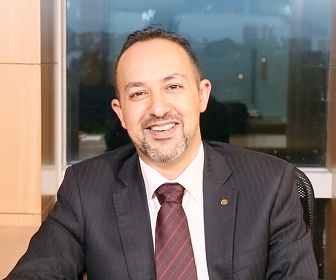Technological Innovation in Middle East: What Next
Few years ago, Cloud was dismissed as a fad, but today it has evolved into a new norm. Data is moving at the speed of light, as Internet of Things (IoT) makes cities smarter. More and more organizations have started to fully embrace cloud services, recognizing the cost-cutting and agility-improving benefits that they provide. We expect to see an increase in the uptake of such services in the coming year, with Cloud becoming the universally accepted new normal. Augmented Reality is optimizing consumer engagement by harmonizing physical, virtual and digital experiences across platforms. There’s no denying, 2016 has experienced a significant change in the attitude of organizations towards these advanced and emerging technologies. And this change will spur a domino effect in 2017 and beyond.
Things may be subject to change, especially in the Middle East; however, these predictions are made based on market trends and historic data. The point of making predictions is not to be right, but to be ready.
2017 will be about embracing agile principles that allow for shifting priorities; empowering employees with “small-team” mentalities that drive innovation; and using data to put the right information at the right time in front of every single employee, clients and prospects. In this atmosphere, employees encounter less red tape, as leaders’ trade innovation-stifling bureaucracy for effective guardrails. In other words, “everything has to change”.
As the UAE (United Arab Emirates) braves tumbling oil prices and gears up for the World Expo 2020, the country is set to increase its IT spending. According to IDC (International Data Corporation) recent reports, it expects the country’s IT spend to grow to $6.2bn in 2017, as technologies such as cloud, big data, social and mobility become investment priorities. The emergence and increasing traction of so-called innovation accelerators, such as the IoT, robotics, virtual reality, next-gen security and 3D printing will both disrupt and boost spending.
For example, the UAE’s public cloud market will grow to $75m in 2017. Meanwhile, the transformational impact of the IoT will begin to show in the UAE in 2017. Per IDC, IoT technology will become more evident in sectors such as freight monitoring, smart grid electricity, manufacturing operations, production asset management, and remote health monitoring. The biggest spenders on IoT in the UAE next year, are tipped to be the manufacturing, transportation, utilities and healthcare verticals.
The starting point will be to show how connectivity can improve profitability in sectors as diverse as oil exploration, agri-processing and manufacturing, but expect ICT providers to start positioning themselves as complete, end-to-end partners, with the ability to transform their clients into digital pioneers.
Vision 2021
With UAE’s 2021 vision to create cohesive society and preserved identity, safe public and fair judiciary, competitive knowledge economy, first-rate education system, world-class healthcare and sustainable environment and infrastructure – opens the doors for spending in the IT and Technology, mostly in the Public sector and Health. Similarly, Saudi Arabia and its 2030 vision is to become the global investment powerhouse and a global hub connecting 3 continents- Asia, Europe and Africa.
The investment is enormous; the spending is at a massive scale and the potential for any business growth would be at its peak. I believe that companies today who are looking to grow and prosper, should invest in this market, as the return would be phenomenal and worth every dollar.
More from Tarek Assaf
What is real and what is not? How do we define what’s real? Is it only based on what we see,…
Latest Blogs
A closer look at Kimi K2 Thinking, an open agentic model that pushes autonomy, security, and…
We live in an era where data drives every strategic shift, fuels every decision, and informs…
The Evolution of Third-Party Risk: When Trust Meets Technology Not long ago, third-party risk…
Today, media and entertainment are changing quickly. The combination of artificial intelligence,…




